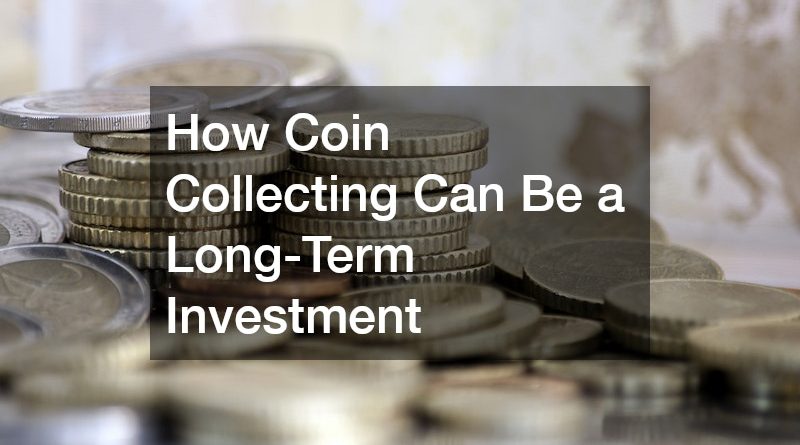How Coin Collecting Can Be a Long-Term Investment

Learn about the potential of coin collecting as a long-term investment strategy, discussing its benefits and key considerations for both novice and seasoned collectors.
The Benefits of Coin Collecting as an Investment
Coin collecting can serve as a rewarding investment avenue due to the intrinsic value of the coins themselves. Coins made from precious metals like gold, silver, or platinum generally retain their value better than many paper assets.
Their worth can appreciate over time, influenced by market demand and scarcity. The historical significance of certain coins often adds a layer of value, making them appealing to both collectors and investors alike.
Additionally, the growth in popularity of coin collecting in recent years has sparked interest among both seasoned investors and newcomers to the market. This rising demand can lead to increased prices for certain types of coins, particularly those that are rare or in excellent condition. The blend of hobby and investment makes coin collecting an attractive long-term strategy for those who appreciate the artistry and history behind each piece.
Lastly, coin collecting can provide an emotional and intellectual investment that many other financial product investments lack. For many collectors, the thrill of discovering a unique coin or completing a particular set can be as satisfying as any financial return. As such, the engagement with the collection itself can make it easier for investors to maintain interest and passion over the long term, ultimately leading to a more enriching investment experience.
The Right Way to Start Coin Collecting
Beginning a coin collection with investment goals in mind requires careful planning and research. Investors should start by educating themselves about the types of coins available, the current market trends, and the historical performance of various categories. Resources such as books, websites, and forums can provide fundamental knowledge necessary for making informed decisions.
Budgeting is another essential step when starting a coin collection for investment purposes. Having a clear financial plan allows collectors to allocate funds appropriately, avoiding impulsive purchases that may not align with their investment strategy. It’s important to differentiate between hobby spending and serious investments, ensuring that one’s financial health is not compromised in the pursuit of collecting.
Purchasing initial coins should be approached methodically, focusing on reputable dealers and established marketplaces. First-time collectors may want to consider acquiring lower-value coins that still have growth potential or offer educational value. This strategy minimizes risk while allowing the new collector to gain experience and confidence in the market.
The Types of Coins You Should Invest In
When considering what types of coins to invest in, collectors often start with rare coins. These coins can include limited mintages or those with historical significance, which tend to have higher appreciation rates. Collectors should stay informed about market trends to understand which types of rare coins are currently in demand to make strategic purchases.
Bullion coins are another category worth considering, as they are valued primarily by their precious metal content. Investing in gold or silver bullion coins can provide a hedge against inflation and currency devaluation. Investors interested in this route should pay close attention to current metal prices and market fluctuations to make informed buying decisions.
Additionally, commemorative coins, created to mark significant events or anniversaries, can present unique investment opportunities. These coins often generate interest due to their limited production runs or distinctive designs. Understanding the demand for specific commemorative coins can be a rewarding aspect of collecting, providing both emotional satisfaction and potential financial returns.
The Ways Coin Value Is Assessed
Assessing the value of a coin collection requires a thorough understanding of the grading systems used by professionals in the field. Different grading scales determine a coin’s condition and, thus, its value. Familiarity with terms such as “Mint State,” “Very Fine,” and “Good” can help collectors evaluate their coins accurately and adjust their investment strategies accordingly.
Market comparisons are another method for evaluating the value of a collection. By researching recent sales data and auction results, collectors can gauge how similar coins have performed in the market. Keeping an eye on market trends can provide valuable insights into when to buy or sell based on performance and demand.
Additionally, consultation with professional appraisers can be beneficial for assessing both the monetary and sentimental value of a collection. Experts in numismatics can provide comprehensive evaluations and recommend the best practices for both selling and maintaining one’s collection, helping collectors maximize their investment potential.
Coin collecting can emerge as a viable long-term investment strategy when approached with careful planning, education, and a clear understanding of the market. By recognizing the benefits and fostering a passion for the history behind the coins, both novice and experienced collectors can find financial and personal fulfillment. Ultimately, informed decision-making and ongoing education in the field are crucial for maximizing potential returns in the fascinating world of numismatics.

